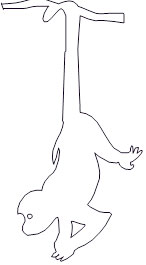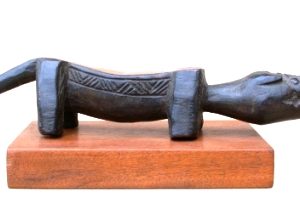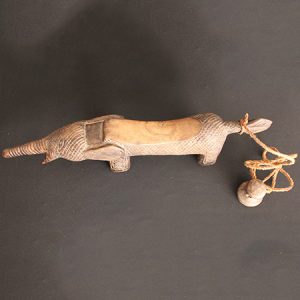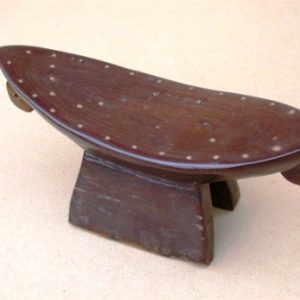THE HEADRESTS OF AFRICA
Also known as the head-stool, neck-stool or headrest, this piece of African furniture is usually made out of wood. This item really comes into its own in cultures that place great stress on large and elaborate coiffures intended to last for sometime. The neck-rest is then used to raise the heads from the ground so as to protect the coiffures. The traditional means of creating such coiffures, where this is still practised, takes half a day or more; and the finished is intended to remain undisturbed for sometime. It is difficult to imagine how so hard an object as a neck-rest could be used at all.
From the formal point of view, neck rests are very varied. Throughout Africa, they usually stand on one, two or three legs and are small and easily portable. Only a few have animal or human figure serving as a caryatid to support the horizontal section with its head or hands or on the curve formed by its bent back.
In many cases, neck rests were used as seats during the day; and if beautiful and finely carved, they often become a status symbol. A talented carver could ask a high price for a fine piece of work.
Neck rests are not found throughout Africa. In western regions they are rare indeed. In Central Africa, they were more common and were often equipped with caryatid figures. They were most commonly found, however, among the nomadic societies of Eastern Africa. Here, in cultures not very rich in terms of material possessions, neck rests as also stools, were seen as one of the most important status symbols for men.
Showing all 3 results

 0 items
0 items 


